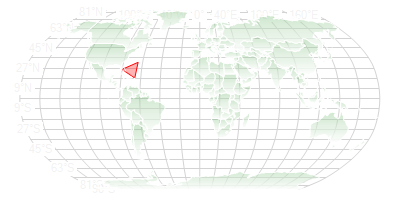I am working with Dundas maps and need to overlay the map with bubbles depicting some data. I want to add shapes to the map in order to achieve this. I can add a triangle (or any straight-line-polygon) like this:
public static void AddShape(this MapControl map, List<MapPoint> points, Color color, string name)
{
if (points[0].X != points[points.Count - 1].X && points[0].Y != points[points.Count - 1].Y)
points.Add(points[0]);
var shape = new Shape
{
Name = name,
BorderColor = color,
BorderStyle = MapDashStyle.Solid,
BorderWidth = 1,
Color = Color.FromArgb((int)(255 * (0.3)), color)
};
var segments = new[] {new ShapeSegment {Type = SegmentType.Polygon, Length = points.Count}};
shape.AddSegments(points.ToArray(), segments);
map.Shapes.Add(shape);
}
public static void AddBermudaTriangle(this MapControl map)
{
var points = new List<MapPoint>
{
new MapPoint(-80.15, 26.0667),
new MapPoint(-64.75, 32.333),
new MapPoint(-66.07, 18.41)
};
map.AddShape(points, Color.Red, "Bermuda Triangle");
}

You can see that the Bermuda Triangle overlays the map in red. Now I want to calculate a set of points to pass to my AddShape method that would draw an elipse or circle. I just need a simple algorithm for calculating the x and y coordinates of a given number of points. Perhaps starting with a given point that would represent the centre of the circle. For example:
public static void AddCircle(this MapControl map, Point centre, double radius, string name)
{
var points = new List<MapPoint>();
const int n = 360;
for(var i = 0; i < n; i++)
{
//calculate x & y using n, radius and centre
double x = 0;
double y = 0;
points.Add(new MapPoint(x, y));
}
map.AddShape(points, Color.Red, name);
}
I know that the x,y calculation is simple trigonometry but I'm suffering a brain freeze. Help!
EDIT (Solved using tur!ng's code):
public static void AddCircle(this MapControl map, Color color, MapPoint centre, double radius, string name)
{
var points = new List<MapPoint>();
const int n = 360;
for(var i = 0; i < n; i++)
{
var x = (radius * Math.Cos(i * Math.PI / 180)) + centre.X;
var y = (radius * Math.Sin(i * Math.PI / 180)) + centre.Y;
points.Add(new MapPoint(x, y));
}
map.AddShape(points, color, name);
}

The blue circle (over Greenwich) is distorted because of the map projection over a Robinson grid.